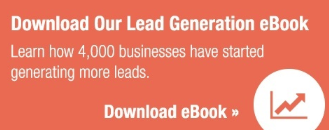We remember, not too long ago, when marketing assistants had to, quite literally, thumb through the yellow pages to find leads. This step inevitably led to the dreaded cold call, many voicemail messages and a whole lot of frustration. This process sums up what's wrong with "outbound marketing."
Times have changed, of course, and now social networks like Google+ and LinkedIn allow professionals to easily and openly engage customers and collaborate with like-minded peers. Today we'd like to look at perhaps the two best places for online networking and lead generation: Google+ communities and LinkedIn groups.
Let's start with Google+. To some, the network was simply "Facebook-lite" offering minimal value for small businesses. While that may have been the case a few years ago, things have changed. For example, the network has 300 million active users, a 58% increase between May and October 2013. Google+ also offers public and private communities. For example, here's a group called Solar Power My Home that demystifies the process of installing residential solar panels. 
If you click the link you'll see small businesses posting unique content about solar. That brings us to a second benefit of Google+: Google's search algorithm favors content from Google+. In other words, Google+ posts that generate high levels of social media engagement place better on Search. The algorithm rewards users who post frequently and post original content.
LinkedIn, meanwhile, offers Communities that, for all intents and purposes, greatly resemble those on Google+. Communities on LinkedIn do a slightly better job of introducing other members to new users, which makes networking easier.
We know that staying active on these sites requires more real-time social engagement. But what, exactly, should your engagement look like? We've given it some thought and came up with four "user profiles" and how they interact with other users on these networks:
“The Lurker” - In this case, you're simply sitting on the sidelines, observing conversations and interactions but rarely actively participating. This approach can nonetheless be worthwhile; you'll be able to see what topics are top-of-mind for industry peers, which is a good first step to practice when just starting out on these social networks.
“The Industry Expert” - This is where the content element really comes into play. The "Industry Expert" participates, comments on articles and trends, and conveys his or her experience to the group as a whole. This user is also there to learn and isn't explicitly concerned with commercial interests. That said, don't be surprised if this low-key approach allows you to connect with customers or network with peers who find your laid-back approach refreshing.
“The Ringleader” - Here you start your own private group based on the topic of your choosing. The goal here may be more civic-minded; think of, say, a "Stockton Downtown Business Owners" group.
“The Salesperson” - The user who uses either platform as a vehicle for selling themselves or their business. Our advice is to proceed with caution. If the audience comprises of would-be customers looking for similar products, that's one thing. But if it's a network of like-minded professionals, most of who aren't selling anything, then be wary of this approach.






